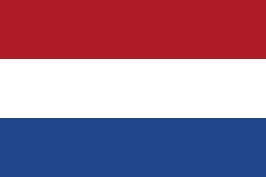
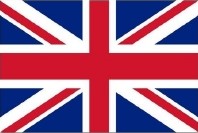
TO DUTCH VERSION ENGLISH VERSION
Text updated March 22nd, 2022
A c
l i n i c d u r i n g w a r t i
m e
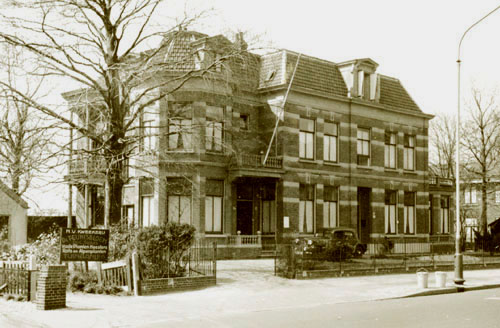
The Beatrix maternity home in the late 1930's
This patrician's house stood on the Zijlweg in Haarlem, The
Netherlands until the mid 1980s. The Beatrix, a maternity
clinic, was established by my parents Wilhelm Becker and Gré
Becker-Janssen in 1937.
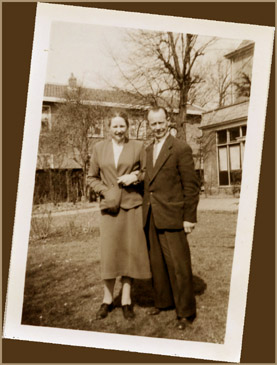
Wilhelm Becker was a German who settled in the Netherlands in
1930 and married my mother. As a result she also became German.
Having themselves naturalized would have been too expensive,
however. In 1940 Hitler declared war. Although Wilhelm and Gré
were active ant-nazi, they managed to keep their maternity
running under the eye of the German occupier. In the fall
of 1944 the southern part of the Netherlands were liberated by
the allied forces. Because Wilhelm was a German living in the
Netherlands, he then was conscripted into Hitler’s army.
Instead he deserted and went into hiding with his family —
transferring the management of the maternity clinic to a midwife
attached to the institution. After the liberation of the
Netherlands in May 1945 the couple were arrested by the
re-instated Dutch police force.
C O L L A B O R A T I O N
Gré and Wilhelm were arrested under
suspicion of collaboration with the Germans. It was only long
after the end of the war that questions were raised about why
the couple had been interrogated and detained by the Dutch
judicial system. While Gré and Wilhelm dismissed these
questions as “unimportant”, recently discovered documents
indicate that there is more to this story. Further research may
shed some more light on what transpired at the clinic during
wartime.
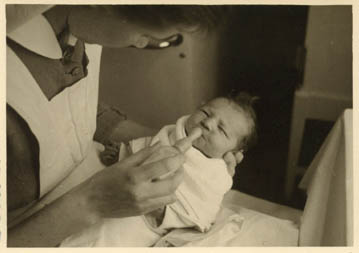
From the initial enquiry, it seems evident that the clinic was
confiscated by the Dutch government. During the interrogations
Wilhelm and Gré denied any accusation of collaboration – on
the face of it these accusations were fairly serious. The
reasons for these accusations are still unclear, and many
details of the case seem to contradict one another. There are
indications that attempts were made to extradite the family to
Germany.
P E O P L E I N H I D I N G
What we know now is that during
Nazi occupation Gré and Wilhelm actually hid more than 40
Jews and fellow resistance fighters, including seventeen
Jewish women who gave birth to children at the clinic.
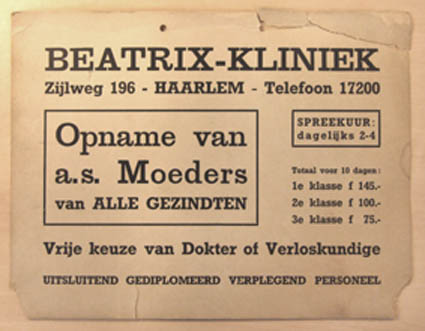 After the war, the couple did not really want to draw any
attention to this side of the story. The main thrust of the
post-war Netherlands was rebuilding a nation shattered by the
war. For this reason they felt no need to dwell on the past.
After the war, the couple did not really want to draw any
attention to this side of the story. The main thrust of the
post-war Netherlands was rebuilding a nation shattered by the
war. For this reason they felt no need to dwell on the past.
N E W S P A P E R A R T I C L E
In the Haarlem daily paper ‘Haarlems
Dagblad’ of 1st November 2012 Cees van Hoore wrote an
article titled 'Er
was dag en nacht reuring in dat huis', in which he
highlights the things that occurred in the clinic during and
after the war. As a result of this article there were many
responses: amongst others from previous patients and some of
those born in the clinic between 1937 and 1958, and from
families of those involved in the war resistance work and
several doctors attached to the clinic.
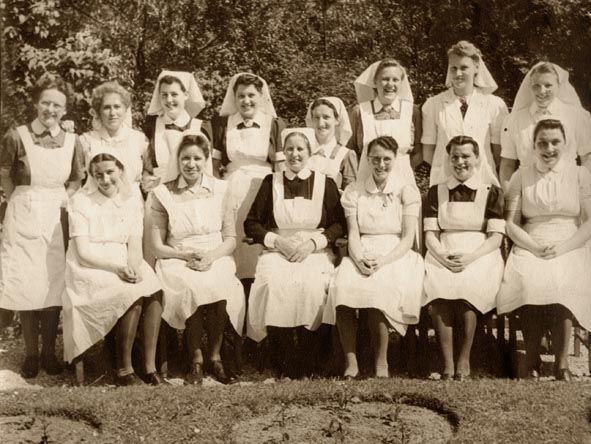
Q U E S T I O N S
The research, begun in 2013, was
basically concerned with finding answers to the following
questions:
- Which people and organizations were involved in the
judicial process of Wilhelm and Gré after the liberation?
What were their motives? Who paid attention to Nanny and Willy, their two
children?
- What happened to the people who were in hiding in the
maternity clinic during the German occupation? Are their
children or other family members able to provide any
information about them?
- What happened to the babies who were born in hiding in the clinic?
Were they ultimately reunited with their parents?
- Who was present in the clinic at that time, either as a
worker or following vocational training?
A R C H I V E R E S E A R C H
Early 2015 the Nationaal
Archief (National Archives) in The Hague granted
permission to do some research into the files concerning Gré
and Wilhelm in the archives of the post-war investigation
services, the CABR (Central Archive of Extraordinary
Justice), as well as in the NBI (the Dutch Institute
for Hostile Property Management). In the meantime another research
project has been initiated into the archives at the NIOD (the Dutch
Institute of War Documentation) and the Noord-Hollands Archief
(Archives of the Province of Noord-Holland).
The documents found in the archives provide a fairly complex picture
of what occurred in and around the maternity clinic before and after
the liberation. There is some evidence of ‘heel dragging’ of
the judicial proces. Old photo and film material has also surfaced.
It is expected that the archive research will be completed sometime
during the course of 2022.
T H E I D E N T I T Y O F T H O S E W H O W E R E I N H I D I N G
Most of those who were in hiding
will in the meantime have passed away. Some of the babies and
young children from that time may still be alive. With the
help of a summary survey and letters that have been found, an
attempt to ascertain their identities has been made. Thus far,
in a few cases, with success, which has led to meeting up with
these people – thanks to the efforts of the United States
Holocaust Memorial Museum (USHMM) in Washington DC and the
Jewish Social Network Institute of the Netherlands.
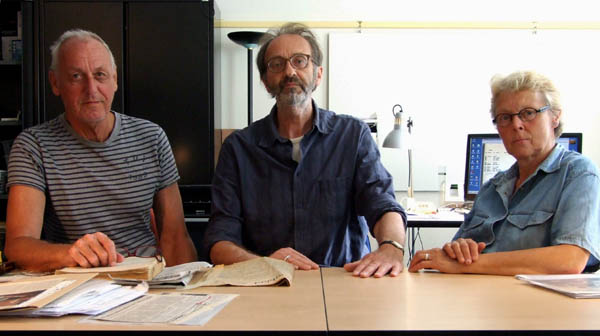
Martin Sturkop, Hans Becker, Peti
Pieper
research team 'Maternity
Clinic'
A I M
The aim of this project is to
produce an as accurate as possible reconstruction of events
connected with the clinic at this particular point and time.
Accuracy of the provided material is paramount and the
processing of it will still take some time.
However, due to covid19, progress might be delayed.
|
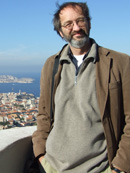


 After the war, the couple did not really want to draw any
attention to this side of the story. The main thrust of the
post-war Netherlands was rebuilding a nation shattered by the
war. For this reason they felt no need to dwell on the past.
After the war, the couple did not really want to draw any
attention to this side of the story. The main thrust of the
post-war Netherlands was rebuilding a nation shattered by the
war. For this reason they felt no need to dwell on the past.

